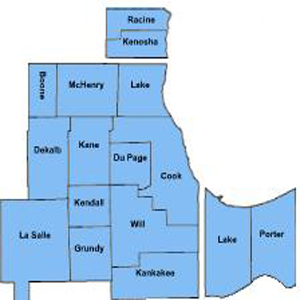Top Five Tips for Picking Book Club Books
Top Five Tips for Picking Book Club Books

Various e-book readers. From right to left iPad (Apple、2010) kindle DX (Amazon、2009) kindle 2 (Amazon、2009) kindle 1 (Amazon、2007) PRS-505 (Sony、2007) PRS-500 (Sony、2006). (Photo credit: Wikipedia)
(BEAUFORT, SC) More than five million Americans belong to book reading groups – not counting online groups – and most are women. Not surprising, since the existence of book clubs traces back to mid-18th century England when women began hosting salons at each other’s homes for intellectual advancement. The sales power of book clubs amplifies around holidays like Mother’s Day, but even tight knit, literary friends can bicker over picking books to read as a group.
Which is why Teresa Bruce, the author of a new, book-club tested work of non-fiction “The Other Mother: a rememoir” (Joggling Board Press, 2013) is sharing her top five tips for book club harmony.
1)Find authors whose characters drink wine.
Book clubs are social gatherings for women – a once-a-month chance to crack open a bottle (or several) of wine and let conversations wander where they will. What better harmony than a literary character who would fit right in to the sisterhood?
In Bruce’s “The Other Mother: a rememoir,” readers can gauge the emotional complexity of an upcoming scene by the type of wine the protagonist opens on her Southern porch. A humdrum chardonnay and she’s expecting a short visit. A vintage California Mondavi means a celebration or a new adventure.
2)Some sex, but not 50 shades of embarrassment.
Unless your book club reads only Kindle or I-Pad titles, your kids, co-workers and husband will be checking out the cover. And judging.
“Sassy but subtle,” recommends Will Balk, a former manager of a New York Times-reporting bookstore in Beaufort, SC. “You don’t want to blush walking up to the register.”
“The cringe factor was important to me,” Bruce says. “But since my other mother, the title character, was an 82-year-old former burlesque dancer I had fun choreographing the juicy parts.”
3)Avoid opening a can of politics or religion.
Investment clubs or church reading groups aside, there are topics guaranteed to divide book clubs and politics and religion top the list.
“It’s not that you never ever want to go there, but save the really controversial topics for once a year,” Balk advises. “That way, easily offended readers can just skip that month and pretend they had to work late that night.”
4)Pick authors with up-to-date websites and books with great Facebook pages.
If all you ever wanted to do was read books in a vacuum, you wouldn’t be in a book club to begin with. Great books are more than plot and character – they start conversations. And you’re more likely to get an author to come talk to your club, or join in over Skype, if she’s already interacting with readers on a regular basis. Facebook pages are a great place to connect with other book club readers in different parts of the country. If an author can’t come, independent booksellers might host a theme night in the store or suggest a guest speaker related to the book’s topic.
“One book club reading ‘The Other Mother’ invited me over to talk about the book in a yurt! What author could resist that?” Bruce says. “Today’s readers want more than a one-way experience and I love it when they post their own stories on the book’s Facebook page and share videos and photos.”
5)Religion, no. Redemption, yes.
Women don’t want to spend an entire month reading a bleak book only to depress each other more on book club night. At least one character in the book should learn, grow or triumph in some way.
“There’s not enough wine in the world to make up for picking a book with no redeeming characters,” says Balk. “I know, because I’ve recommended a few that fell completely flat.”
Jogging Board Press is releasing the Kindle edition of “The Other Mother: a rememoir” in time for the 100th anniversary of Mother’s Day.
“Every Mother’s Day, the florist could barely keep up with bouquets for Byrne Miller,” Bruce remembers. “She was proof that no matter our age, we all need and cherish the love of other mothers.”
DETAILS
For a review or reader give-away copy of “The Other Mother: a rememoir” contact [email protected]
For more information, visit: jogglingboardpress.com
Related articles
Ray Hanania
In 1976, he was hired by the Chicago community newspaper The Southtown Economist (Daily Southtown) and in 1985 was hired by the Chicago Sun-Times and covered Chicago City Hall for both. In 1993, he launched the “The Villager” Newspapers which covered 12 Southwest Chicagoland suburban regions. He hosted a live weekend Radio Show on WLS AM radio from 1980 through 1991, and also on WBBM FM, WLUP FM and shows on WSBC AM in Chicago and WNZK AM in Detroit.
Hanania is the recipient of four (4) Chicago Headline Club “Peter Lisagor Awards” for Column writing. In November 2006, he was named “Best Ethnic American Columnist” by the New American Media;In 2009, he received the prestigious Sigma Delta Chi Award for Writing from the Society of Professional Journalists. Hanania has also received two (2) Chicago Stick-o-Type awards from the Chicago Newspaper Guild, and in 1990 was nominated by the Chicago Sun-Times for a Pulitzer Prize for his four-part series on the Palestinian Intifada.
Hanania’s writings have been published in newspapers around the world. He currently is syndicated through Creators Syndicate and his column is feature every Sunday in the Saudi Gazette in Saudi Arabia. He has written for the Jerusalem Post, YNetNews.com, Newsday in New York, the Orlando Sentinel, the Houston Chronicle, The Daily Star, the News of the World, the Daily Yomimuri in Tokyo, Chicago Magazine, the Arlington Heights Daily Herald, and Aramco Magazine. His Chicagoland political columns are published in the Southwest News-Herald and Des Plaines Valley News on several Chicagoland blogs including the OrlandParker.com and SuburbanChicagoland.com.
Hanania is the President/CEO of Urban Strategies Group media and public affairs consulting which has clients in Illinois, Florida, Michigan and Washington D.C.
His personal website is www.TheMediaOasis.com. Email him at: [email protected].
Latest posts by Ray Hanania (see all)
- Remembering that Southwest Gal, Judy Baar Topinka - December 19, 2014
- Lyons and McCook Businesses Partner to Give Back and Strengthen Communities - December 8, 2014
- Interview with former Oak Lawn Mayor Dave Heilmann - December 5, 2014






 Follow
Follow





